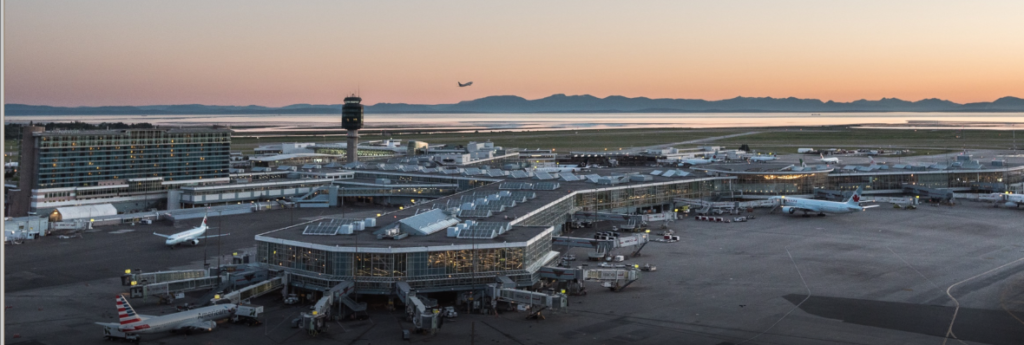Canada’s second-busiest airport is getting a little busier. On average, between 26,000 and 29,000 people are travelling through Vancouver International Airport each day. In comparison, a regular September or October day would see 65,000 to 70,000. Last summer and fall, there were only about 10,000 people daily.
“What’s been good that we have seen is as traffic started to ramp back up this summer, usually in September it begins to fall off again, (but) we’ve actually seen a pretty good hold of the traffic pattern, so people are continuing to travel in a safe manner,” says airport VP Robyn McVicker.
Some logistical challenges remain due to the pandemic, including different requirements at the place of origin and destination. These include Canada’s new federal vaccination mandate, brought into play Oct. 30 for those departing from Canadian airports.
“Anybody travelling out of, coming through, or working at (the airport) has to be fully vaccinated with a Health Canada-approved vaccine,” reminds McVicker.
Exemptions are available for a small number of travellers, with a transition period allowing travellers who are not vaccinated to instead present proof of a molecular test result through Nov. 29. A molecular test uses a nasopharyngeal or nose swab or a saliva sample. These travellers must either show a negative result within 72 hours of their departure time, or a positive result that is 14 to 180 days old.
Even those who are fully vaccinated may still be selected for mandatory randomized arrival testing. And those who are arriving at Canadian airports must show both their proof of vaccination and their pre-entry test result. Other countries may have different testing requirements for travellers upon arrival.
McVicker says some testing facilities are available near or inside the airport. People travelling to countries that accept a rapid antigen test for arrival (including the US) can get one in the east concourse area of the airport. People looking for a molecular test can go to LifeLabs near the airport, on Russ Baker Way, which will return results within 12 hours.
The airport is also focusing on additional protocols, including sanitization stations and mandatory masking.
And with the holiday season upcoming, McVicker says December and January traffic is likely to be high.
“COVID has really changed how we forecast and how the airlines forecast (passenger numbers),” she says. “Probably numbers will go down a bit in the month of November to 20,000, 25,000 a day, but I would absolutely anticipate that it goes up well for December and January. We expect it to be more than we have today (in December).”
Chorus Aviation
Meanwhile, Chorus Aviation Inc. says it is also riding the fledgling recovery in the airline business driven by the return of traffic both in Canada and abroad.
The company, which leases planes across the globe and provides regional service for Air Canada, says its fleet saw far greater use on both those fronts last quarter, with a further uptick on the near horizon.
Chief executive Joe Randell says its Jazz Aviation subsidiary carried more than doubled the number of passengers on its Air Canada routes in the third quarter than it did in the first half of the year.
“Change is in the air and our industry has arrived at an important inflection point,” he told investors in a conference call late last week. “The regional aviation sector is leading the recovery of domestic air transportation in many parts of the world.”
Randell said he expects flying activity to reach about 75 to 80% of pre-pandemic levels in the fourth quarter, adding that a return to full operations by late in the second quarter 2022 “could be very achievable.”
“This last quarter is when we’ve really seen it start to pick up. And that’s why we have this optimism, and we’re seeing the request for proposals out there now from carriers,” Randell said.
“But again, it depends. It depends on the demand on the Air Canada front. It depends on the border,” he added, noting “fits and starts” on regional routes in Europe as well.

